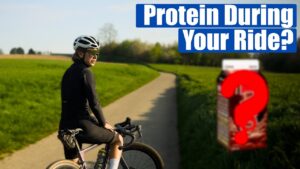Three Things That limit Your Aero Potential (On The Bike) with Road Cycling Academy
Source: Road Cycling Academy Youtube Channel: Three Things That limit Your Aero Potential (On The Bike)
Video Three Things That limit Your Aero Potential (On The Bike) with Road Cycling Academy
Video Three Things That limit Your Aero Potential (On The Bike) with Road Cycling Academy YouTube Channel.
Three Things That limit Your Aero Potential (On The Bike)
**Heading 1: Understanding Aerodynamics for Road Cycling**
When it comes to road cycling, aerodynamics play a crucial role in determining how fast a rider can go. While many cyclists focus on purchasing aerodynamic gear such as aero frames and deep section wheels, the real key to improving speed lies in the rider’s ability to minimize drag through their body position. This is where the concept of the coefficient of drag (CDA) comes into play, with body shape and frontal area being the main factors affecting aerodynamic efficiency.
**Heading 2: Assessing Limitations in Body Position**
To improve aerodynamics on the bike, it is essential to assess and address any limitations in body position that may be hindering performance. One of the main factors to consider is the ability to hold a long, low position on the bike. This requires the rider to have good flexibility, particularly in the hip area, to rotate the pelvis forward and enable the torso to lean down and reduce wind resistance.
**Heading 3: Addressing Anterior Pelvic Tilt**
One of the most critical aspects of achieving a low and aerodynamic position on the bike is the ability to maintain an anterior pelvic tilt. This involves rotating the pelvis forward to allow for a more streamlined body position. Riders who struggle with hip impingement or limited flexibility in the hamstrings may find it challenging to achieve this pelvic tilt, leading to increased drag and reduced speed on the bike.
**Subheading 1: Testing for Anterior Pelvic Tilt**
To determine if you have any limitations in maintaining an anterior pelvic tilt, you can perform a standing forward bend test while keeping the lordosis in your spine. If you find it challenging to rotate your pelvis forward without compromising the curvature of your lower back, it may indicate a restriction in hip mobility that needs to be addressed through targeted exercises and stretches.
**Heading 4: Overcoming Hip Impingement**
Another common limitation that can impact aerodynamics on the bike is hip impingement, particularly at the top of the pedal stroke. This can be caused by restricted hip internal rotation and limited flexibility in the hip joint, making it difficult for riders to bring their knee up high and maintain a smooth pedaling motion.
**Subheading 2: Improving Hip Mobility**
To address hip impingement and improve hip mobility, cyclists can focus on exercises that target hip internal rotation and flexibility. By increasing range of motion in the hip joint, riders can pedal more efficiently and maintain a lower, more aerodynamic position on the bike.
**Heading 5: Correcting Thoracic Kyphosis**
A third factor that can impact aerodynamics is thoracic kyphosis, which refers to a rounding of the upper back that can restrict neck extension and hinder a rider’s ability to hold a low position on the bike. This is often a result of prolonged sitting or poor posture, leading to stiffness in the thoracic spine that limits overall flexibility.
**Subheading 3: Improving Thoracic Spine Extension**
To combat thoracic kyphosis and improve thoracic spine extension, cyclists can incorporate exercises that focus on opening up the chest and shoulders, as well as stretches that target the muscles responsible for rounding the upper back. By addressing this limitation, riders can improve their ability to maintain a low and aerodynamic position on the bike.
**Heading 6: Maximizing Aerodynamic Efficiency**
By addressing limitations in body position and flexibility, cyclists can significantly improve their aerodynamic efficiency on the bike. This not only translates to faster speeds and better performance but also reduces the risk of injury and discomfort associated with poor posture and restricted mobility. With targeted exercises and a focus on optimizing body position, riders can unlock their full potential and achieve their goals on the road.
The opinions expressed in this space are the sole responsibility of the YouTube Channel Road Cycling Academy and do not necessarily represent the views of CicloNews.










